Media, Pennsylvania, celebrating 100 years of continuous trolley service this month, is kind of an exception rather than the rule in American life today. But there was a time when the trolley was a ubiquitous part of everyday life. As evidence of that, we present the 1904 card game “Trolley.”
Board games and card games are another interest of mine, so the game of Trolley is for me a “cross-collectible,” meaning it’s a doubly whammy. “Business” card games, which involve transactions based on aspects of everyday life, became very popular in the 1890s. By contrast, board games became more popular later, culminating in Monopoly, which became a national obsession in 1935.
There were several card games based on commodities trading, and Gavitt’s Stock Exchange, dating back to 1903 or perhaps even earlier, was among the most popular. Here is what the Strong Museum of Play has to say about Gavitt’s:
Gavitt’s Stock Exchange (G.S.E.) card game was developed in 1903 by Harry E. Gavitt (1875-1954), a printer in Topeka Kansas. The game proved successful and soon it was taken over by Parker Brothers, redesigned by Edgar Cayce, and released in 1904 as Pit. Pit made success as well and is still played today.
To be more precise, Pit is a “knock-off” of Gavitt’s game. Edgar Cayce (1877-1945), best known as the so-called “Sleeping Prophet,” claimed to have invented the game (which he probably did not) and sold it to Parker Brothers.
In the straight-laced Victorian era, these games were something of a revelation. For one thing, they were played by men and women together. For another, they were often boisterous affairs, where people would jump up and yell, “Corner!” if they had all the right cards to corner the market on wheat, corn, or oats.
In the Gavitt’s game, one card is called “The Fatal Telegram,” reflecting on an era when receiving a telegram invariably meant bad news.
These games often had very complicated rules, and could be played more than one way. The rules for Trolley are too complicated to be given here, so we will instead just present the beautiful lithography of the box and cards for your perusal, a reminder of a simpler time, when gender and other societal roles were much more rigid than they are today, during the Time of the Trolley.
If you’re looking for another way to celebrate the Media trolley centennial, there will be a fantrip on May 5. You can read about it here. To commemorate the anniversary, SEPTA has put a red overwrap (in the style of the former Red Arrow lines) on one the LRVs used on the Media and Sharon Hill lines.
-David Sadowski
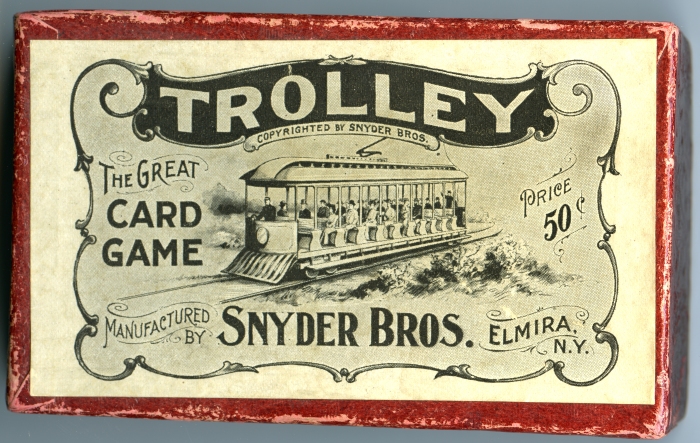
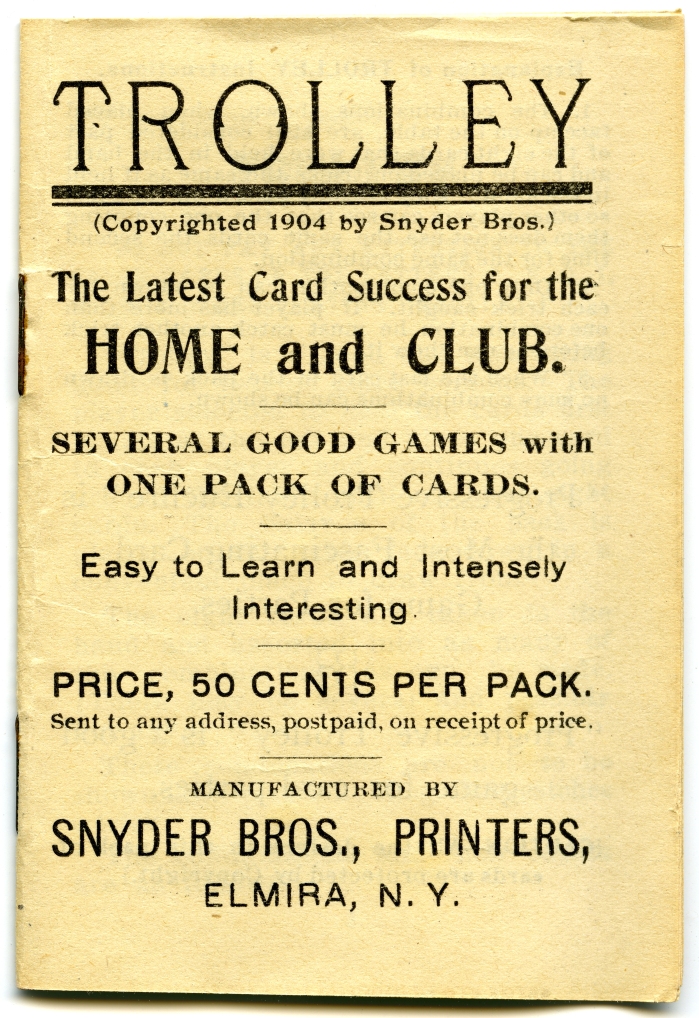
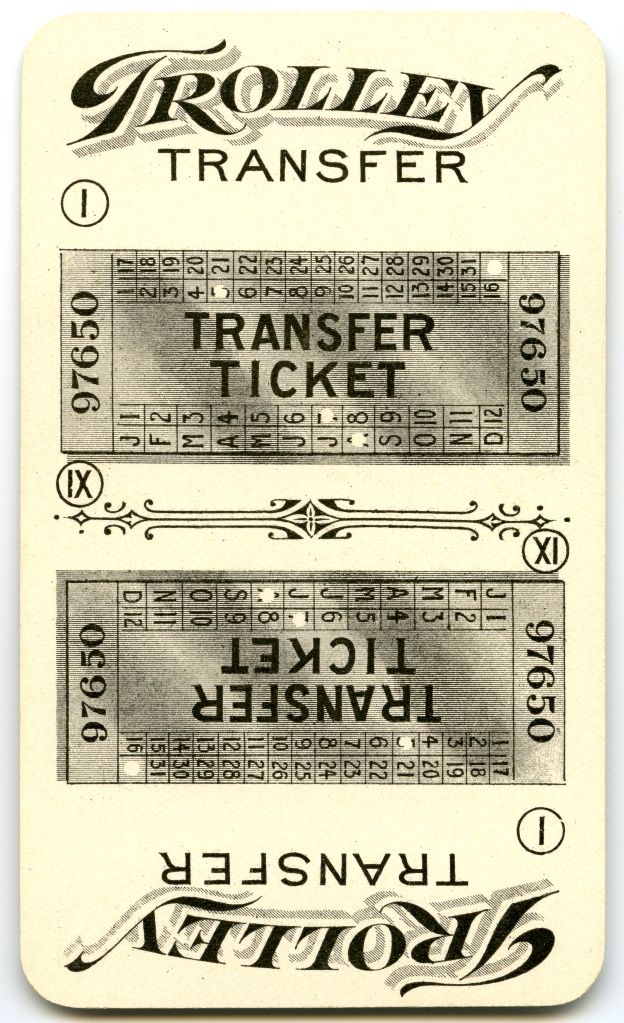
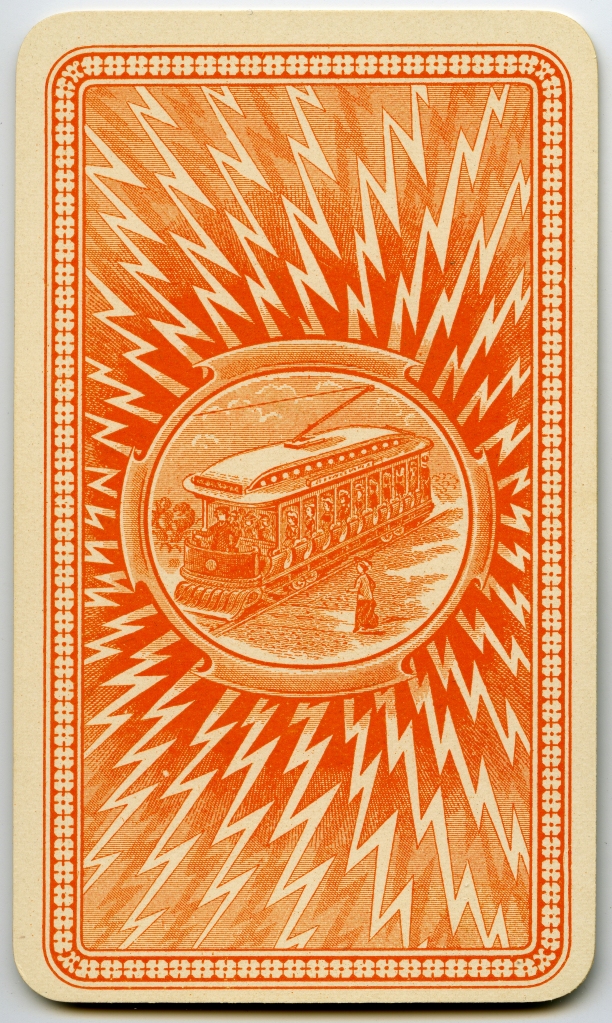
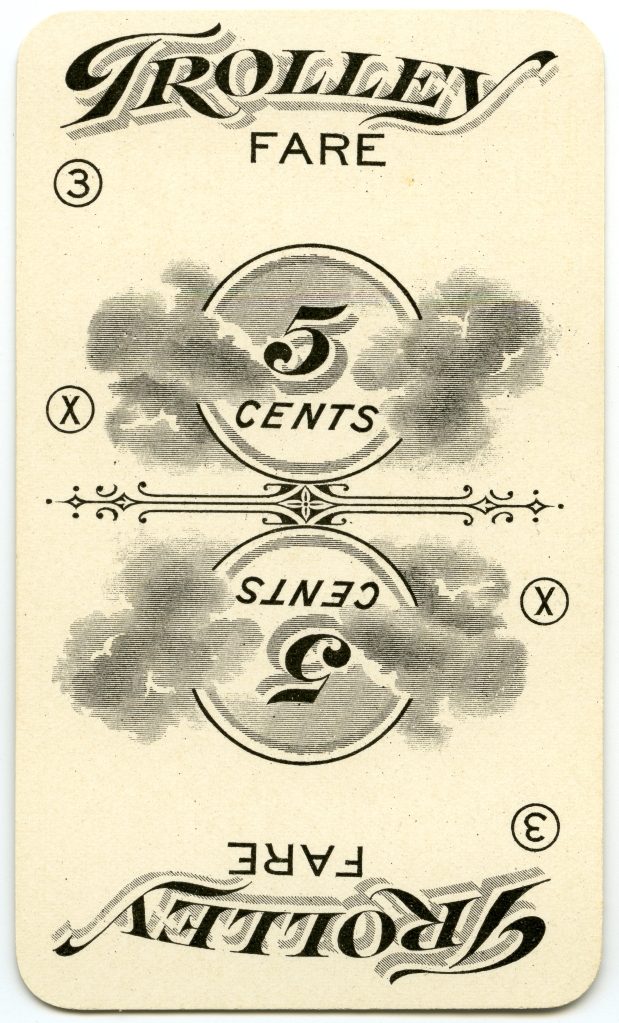
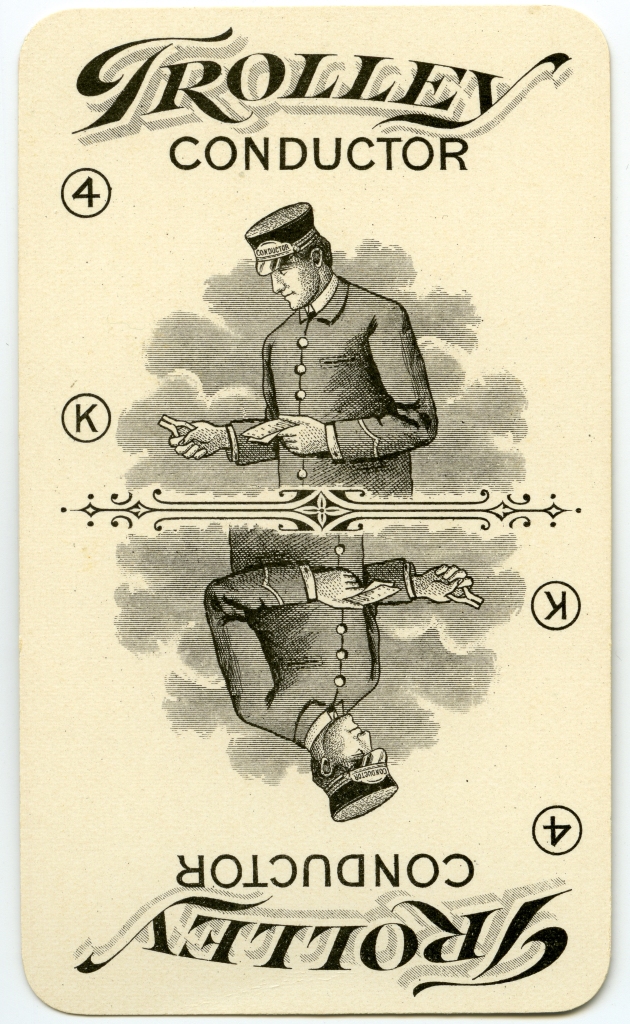


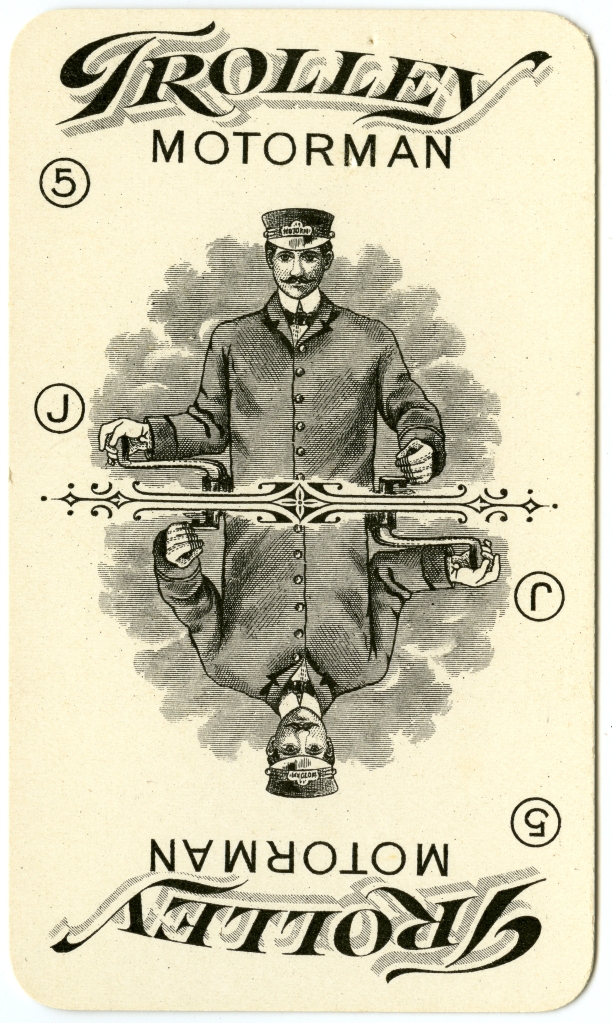

SEPTA Kawasaki-built LRV #106 near the Avon Road station in Upper Darby, PA in August 1983. (Author’s collection)
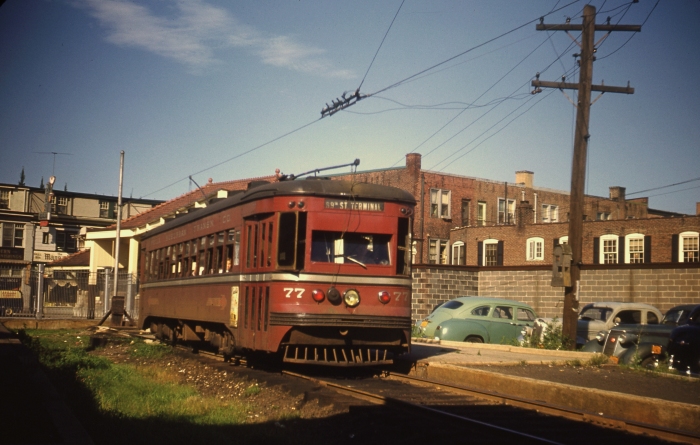
Red Arrow Brill-built “Master Unit” interurban trolley #77 at Ardmore on July 23, 1949. (Photo by James J. Buckley, Author’s collection)
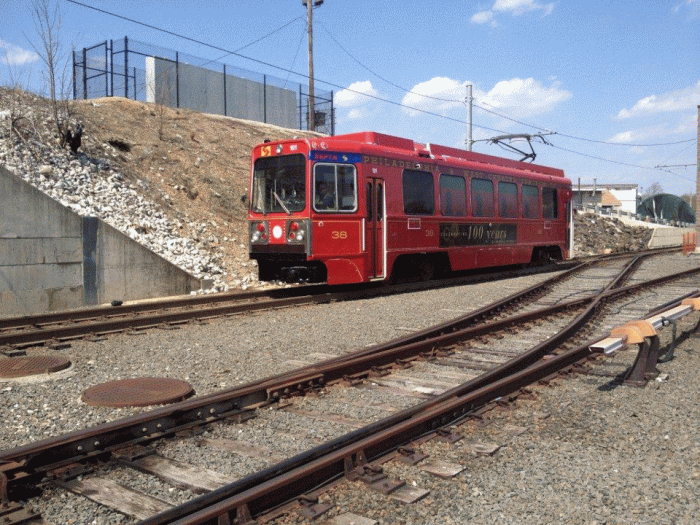
SEPTA LRV #101, done up with a special red overwrap to celebrate the 100th anniversary of trolley service to Media PA. (Photo by Bob Foley)